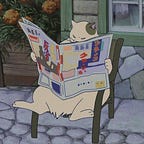On Picking The Right People
Duck’s Relationship Filtering Model and how it works
Our relationships are what make us who we are — romantic or otherwise.
Duck’s Filtering Theory helps us identify how we interact with people in our lives and what motivates us to make their association. The theory is credited to Steve Duck, British social psychologist turned communication scholar.
Even our closest friendships are deeply rooted in social dynamics. According to Duck, four verbal and non-verbal cues essentially define how we determine our relationships.
1. Sociological or Incidental Cues
These are understood as factors that allow us to observe others, such as proximity of work or frequency of encounters. Most of us only know around 80,000 people in our lifetime. Hence the other seven billion+ people are eliminated based on incidental cues already.
This is the reason why you are more likely to befriend the person who sits next to you during work than, say, someone you’re more compatible with, but they work in a different city.
2. Pre-interaction Cues
These can consist of physical characteristics we observe from afar, such as appearance, style, height, that help us infer more information about a person. Pre-interaction also includes “asking around” about someone, any facts you might encounter before actually interacting with them.
In the case of online dating or dating apps, pictures, trivia, and political leanings help us get a sense of the person and whether we’d be interested in further interacting with them. This also applies to social media presence.
Here, it becomes apparent how we prefer perceived similarity over actual similarity. This becomes the foundational belief for activities like speed dating.
3. Interactive Cues
Interactive cues refer to the initial stages of any social relationship, where one gets to know the other person.
These can be highly intense few weeks or months when you’re still making up your mind about where the person stands in your life. Spending time with people will, at times, destroy any preconceived notions you might have about them–good or bad.
This is the stage where we’re most likely to assign a role to the other person. They can be as simplistic as “work friend” or detailed like “neighbour you only hang out with once a week no more, no less.”
4. Cognitive Cues
Cognitive cues play a significant role when it comes to the dreaded 3-month stage of relationships. Past the 3-month mark is when you find out the dirty laundry. You might go through ups and downs, have fights, find out habits you don’t like.
Cognitive cues, thus, decide if you will have a deep, long-term relationship with someone or not. The association then deepens as all “perceived similarity” begins to fizzle out, and people become more vulnerable in front of each other.
From making acquaintances to deciding to spend entire lives together, human connection is complex. Boiling them down to these four points might be oversimplistic. But it helps us determine the broader trajectory of any relationship from a sociological and communications point of view.
